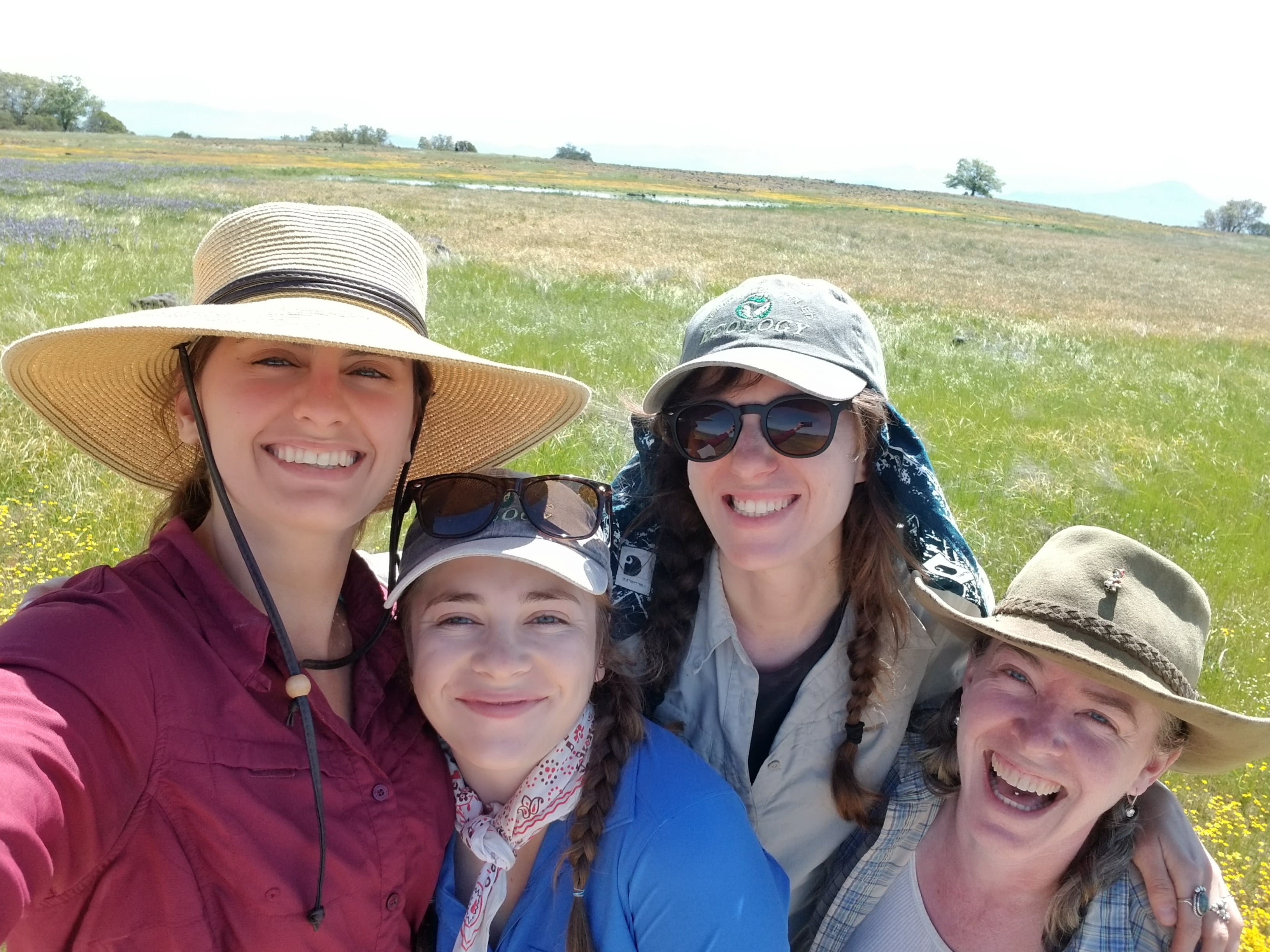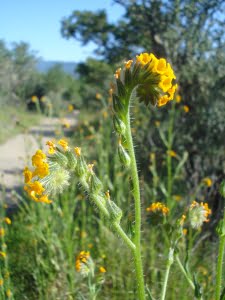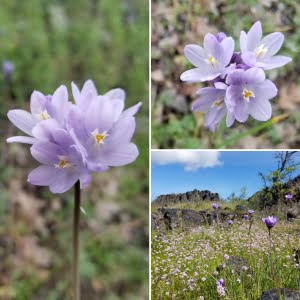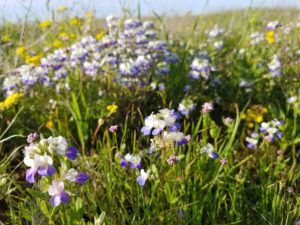
Welcome to Table Rocks, may I take your order?
By Cia Crowe and Eva Brod
June 2019
Have you ever been so hungry that nearly everything around you reminds you of food? Well, that is exactly what happened to our crew while on top of Upper and Lower Table Rocks near Medford, Oregon this April. During our daily hikes up the steep switchbacks, throughout the long field days in the hot sun and into the cool breezes of evening, our conversation often turned to food, and even the plants around us started to look delicious. As we monitored the rare Dwarf Wooly Meadowfoam (Limnanthes pumila ssp. pumila) we created new and improved names for the most appetizing looking plants. Check out the menu of our work, and then see individual flower descriptions below. Please enjoy this 'meal' with us, bon appetit from the Conservation Research Crew! (From L to R in above photo: Eva Brod, Cia Crowe, Miranda Geller, Denise Giles)

Mac n’ Cheese (Amsinckia menziesii)
These were especially common on the trail up to the top of the rocks, and the reasoning for this name is fairly obvious. Upon seeing the vibrant orange cymes, we couldn’t help but think of the babysitter classic: mac n’ cheese. Of course, this observation led to some heated discussion about mac n’ cheese preferences, but we all agreed--homemade is best.


Sunshine Ravioli (Thysanocarpus curvipes)
These capsules may not look the most appetizing given their color, but maybe we can take a note from Dr. Seuss. Pink and green ravioli anyone? If only this plant’s dainty capsules were filled with deliciousness and cooked with sunshine. That would keep us going for awhile! Alas, Sunshine Ravioli’s flowers provide food for butterflies, not botanists.
Grape Cotton Candy (Brodiaea congesta)
Lavender-colored clusters transported us back to childhood ball games and sticky fingers, circus tents and baseball swingers. We imagined that those soft purple petals could melt in your mouth just like grape cotton candy.


Dragoneye Lollipop (Idahoa scapigera)
Now, this lollipop may have been inspired by the dragons in Game of Thrones, but it couldn't be smaller than the famous Drogon and Rhaegal. This funky little plant’s disc-like fruits certainly do resemble the eye of the dragon. While we would have loved to eat it, this lollipop is better suited for a mouse.
Lavender Cupcake (Collomia grandiflora)
Named for its shape and complimentary colors: These charismatic flowers were all over the mesa and we were hungry enough that we could have eaten them all. Although, if we did, we’d probably have ended up in a quick sugar rush and a long food coma.


Fieldwork sure gave us a healthy appetite! But, don’t worry, we did not have to resort to eating these leafy green friends. We had a lot of fun on top of Table Rocks, and also had the chance to see land management practices in action. Barriers on Upper Table Rocks redirect visitors to walk on trails and not through the beautiful fields of flowers. Regular hikers to the area noted the difference from previous years. Where there used to be rocky compacted soils, colorful blooms abound. As newcomers to the field, it is inspiring to see the importance of this work and gives us hope for the future.
Can we take your order? Let us know your favorite in the comments!
Restoration
Research
Education
Get Involved
Contact
Main Office:
4950 SW Hout Street
Corvallis, OR 97333-9598
541-753-3099
[email protected]
Southwest Office:
1202 Parkway Dr. Suite B
Santa Fe, NM 87507
(505) 490-4910
[email protected]
© 2024 Institute for Applied Ecology | Privacy Policy